Japanese larch (JL)
Japanese larch along with other larch species have been widely planted in Britain mainly due to their ease of establishment, rapid early growth, and versatile timber. Larch species had the potential for future expansion on the right sites. However its use now and in the future is under review with the continuing impacts of the disease Phytophthora ramorum affecting planting potential in much of Britain. Currently confirmed infections in larch stands are subject to Statutory Plant Health Notices issued by Forestry Commission, Scottish Forestry, Natural Resources Wales and the Northern Ireland Department of Agriculture, Environment & Rural Affairs (DAERA).
Japanese larch is categorised as a Principal tree species. These are tree species where silvicultural knowledge provides confidence to enable successful deployment across Britain. The species are either already widely used or are increasing in usage. They will continue to be important unless affected by a new pest or disease or become adversely affected by climate change.
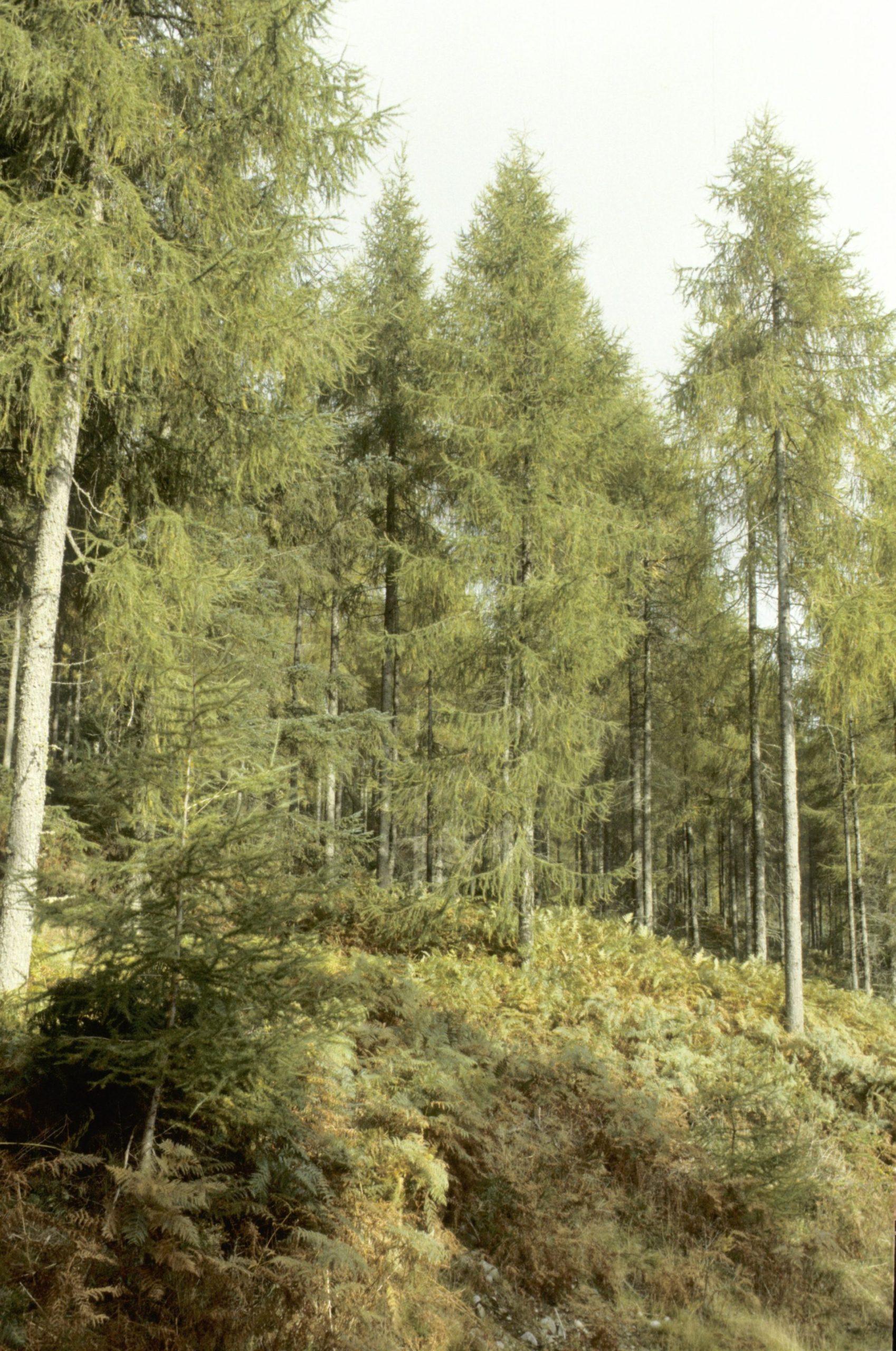
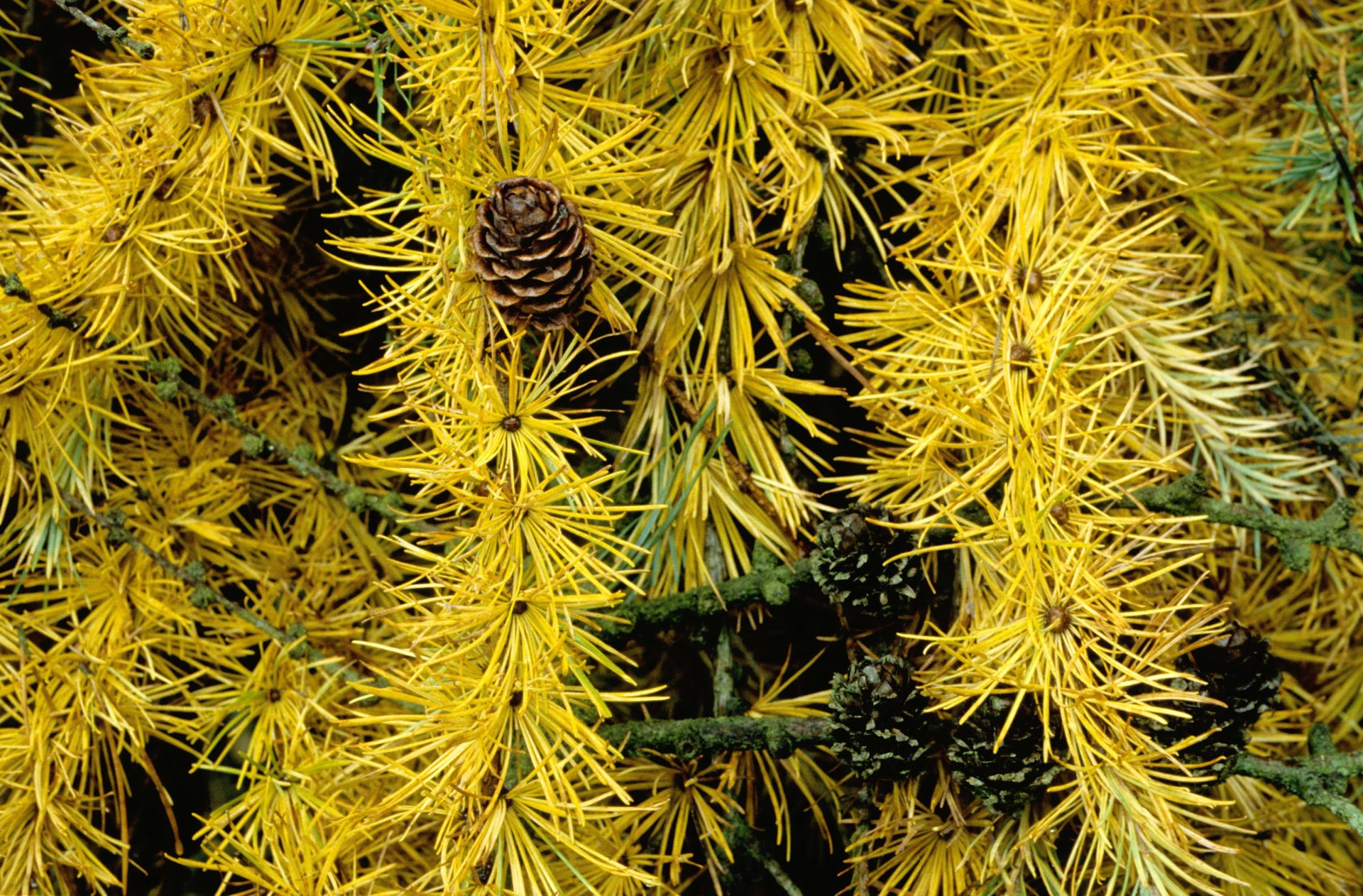
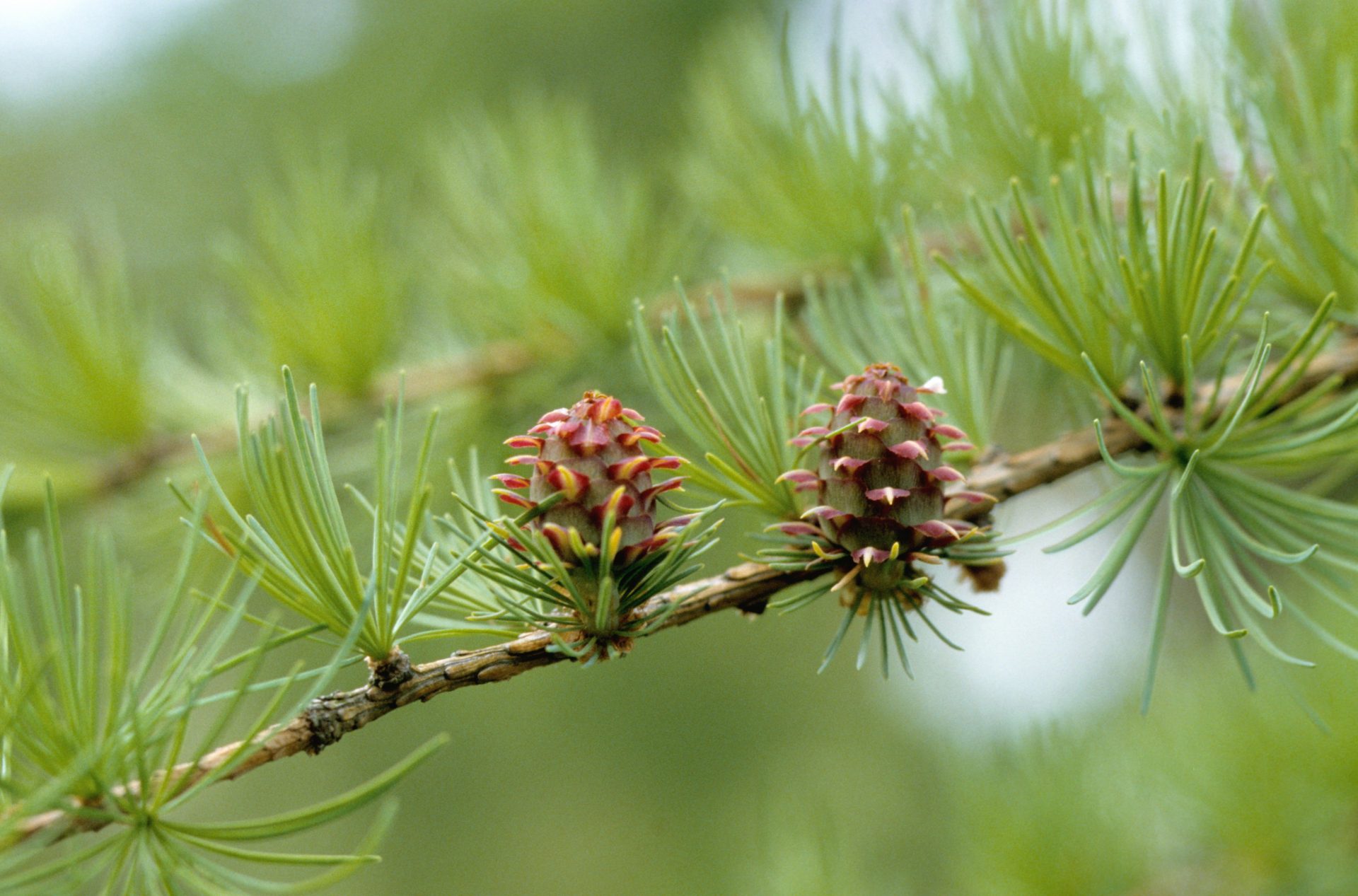
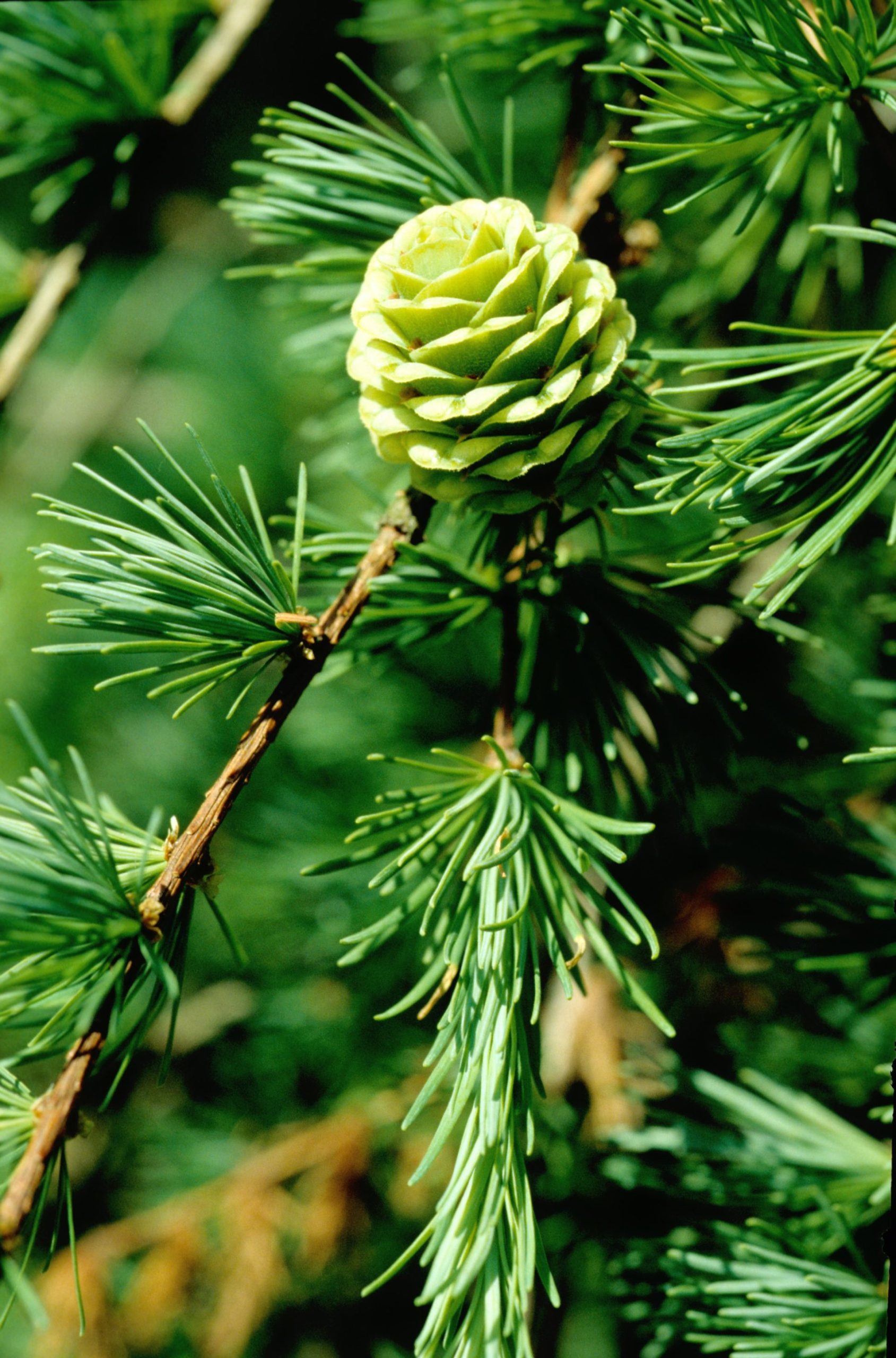
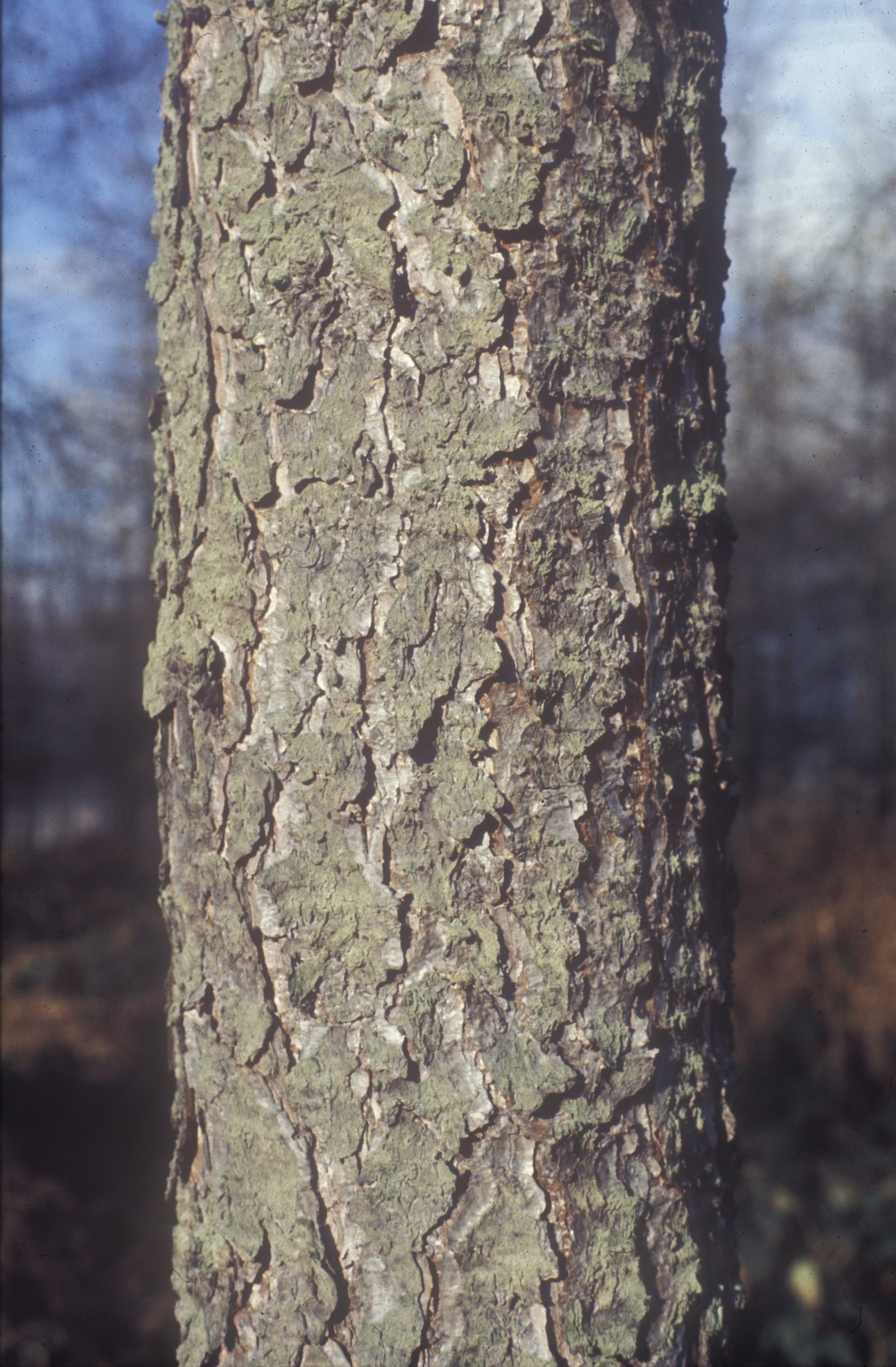
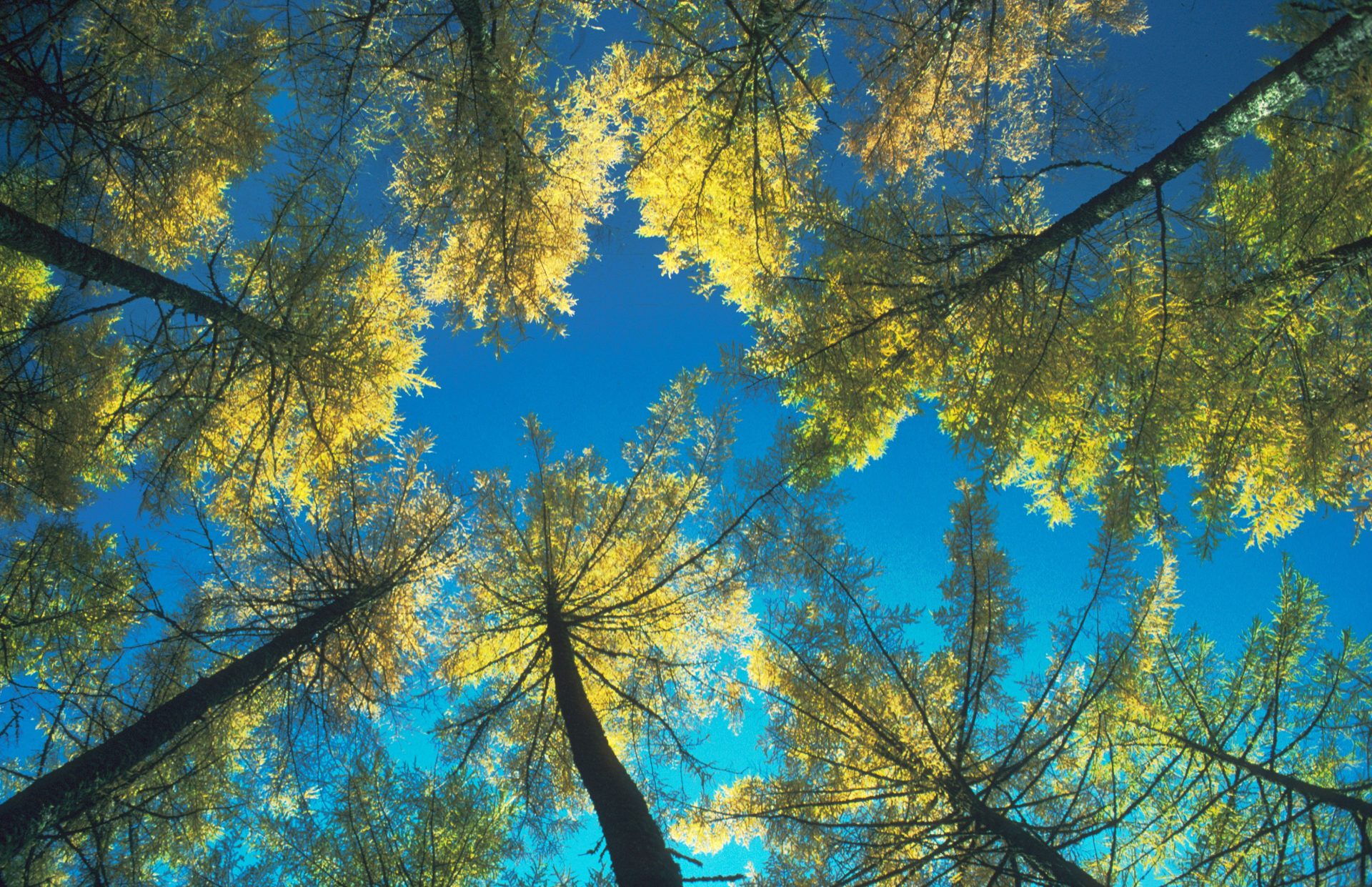
Range
Native to a limited mountainous zone on the central island (Honshu) of Japan, although also widely planted on the northern island of Hokkaido.
Provenance Choice
Collections from British seed stands should be preferred or if these are not available provenances from the central part of the natural range should be used.
Site Requirements
A light demanding pioneer species which needs more than 1000 mm of rainfall for good growth. Cold hardy and withstands moderate exposure, although stem form can be poor especially on exposed or more fertile sites. Vulnerable to spring and autumn frosts. Best suited to mineral soils of poor nutrient status (i.e. less fertile than for European larch) and will also grow on very poor soils and on better drained peats. Fast early height growth means that it is better suited for mixture with conifers.
Further detail on the site requirements of Japanese larch in current and future climates can be examined using the Forest Research Ecological Site Classification Decision Support System (ESC).
ECOLOGICAL SITE CLASSIFICATION TOOL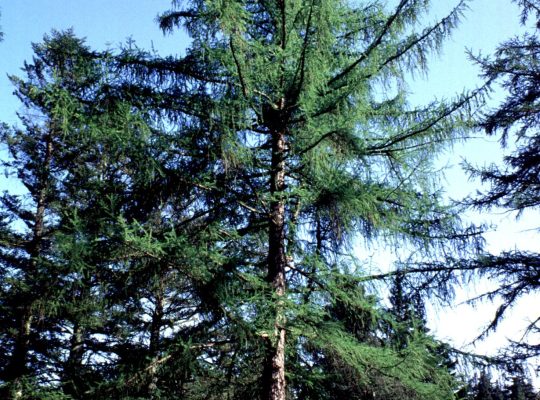
Silviculture
Japanese larch is a pioneer species and a strong light demander. On wind-swept sites trees develop a pronounced lean with resultant poor form. As a deciduous species it has recognised soil improvement capabilities providing improved phosphorus status in soils where it is grown. Japanese larch is also regarded as a good nurse species and conversely will grow on less fertile sites if planted in mixture with Scots pine.
Japanese larch should be planted at 2 x 2 m (2,500 plants/ha). The species flushes early and planting should be completed before flushing starts. Water stress over a dry spring, planting on very free draining slopes or on sites where the soil remains cold after flushing can lead to losses. It is very shade intolerant, so good weeding during establishment is essential to control competing vegetation.
Japanese larch tends to self-prune – unlike most other conifers – if managed in well stocked stand. Pruning may be necessary in more open plantings or mixed stands if a quality sawlog is required. As a strong light demander, thinning should start before the stand reaches 8 m height and should be heavy to provide adequate room for individual trees. Delayed thinning results in a serious reduction in crown density which does not recover easily. Subsequent thinning’s should be conducted at 3–5-year intervals. On very good sites Japanese larch can achieve from 4 to 14 Yield class on a rotation length of 45-55 years.
Pests and Pathogens
Larch species are seriously affected by the introduced pathogen, Phytophthora ramorum, which is causing widespread mortality of larch in many parts of Britain. Japanese larch is highly susceptible but both European larch and hybrid larch are also affected. Phytophthora ramorum is notifiable, and any suspected cases should be reported via TreeAlert.
All three larches (JL, EL and HL) can be killed following attacks by the larch bark beetle, Ips cembrae, which is found in mainland Britain. Trees under stress are preferentially attacked. Ips cembrae is notifiable, and any suspected cases should be reported via TreeAlert.
Japanese larch can also be affected by conifer root and butt rot (Fomes) Heterobasidion annosum as well as another butt rot fungus, Phaeolus schweinitzii.
Rarely susceptible to the fungal disease, larch canker (Lachnellula willkommii), which causes perennial cankers that girdle or distort branches and stems. There is believed to be an association between frost damage and larch canker. Japanese larch can also occasionally suffer striking defoliation by the needle cast fungus Meria laricis.




